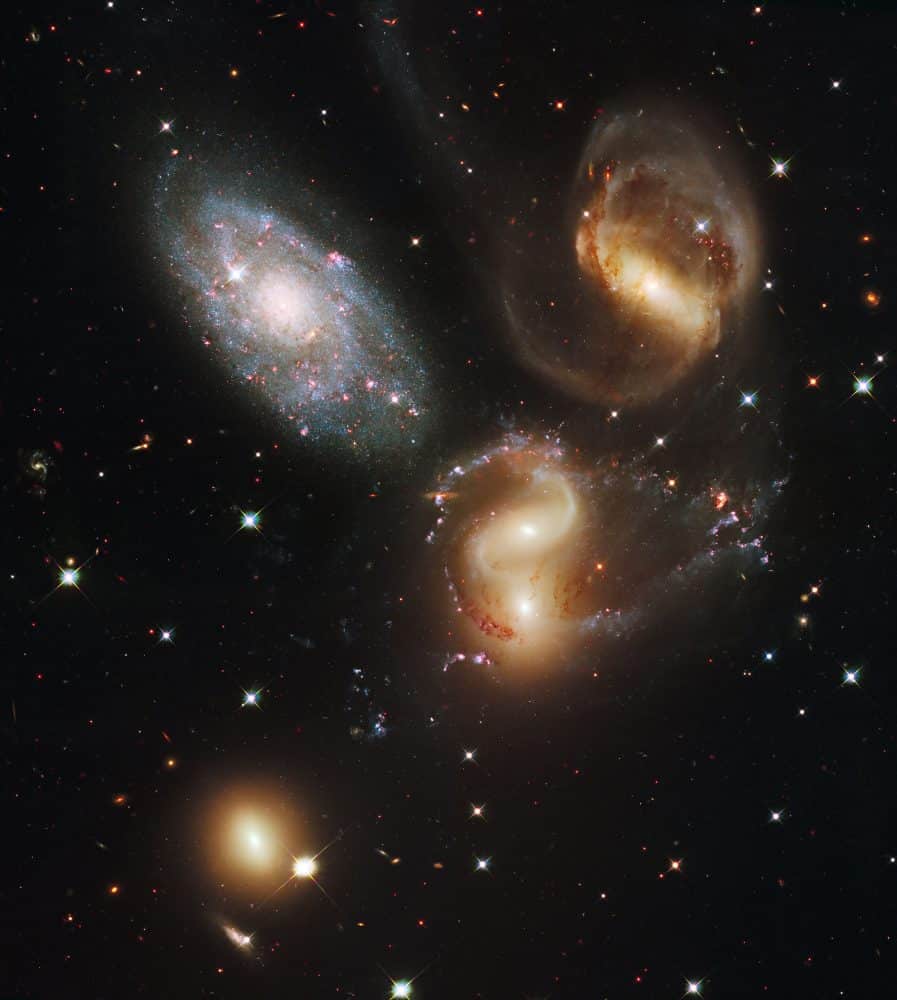The Cosmos with Stephans Quintet
Stephan’s Quintet is a visual grouping of five galaxies of which four form the first compact galaxy group ever discovered. The group, visible in the constellation Pegasus, was discovered by Édouard Stephan in 1877 at the Marseille Observatory. The group is the most studied of all the compact galaxy groups. The brightest member of the visual grouping is NGC 7320 that is shown to have extensive H II regions, identified as red blobs, where active star formation is occurring.
Four of the five galaxies in Stephan’s Quintet form a physical association, Hickson Compact Group 92, and will likely merge with each other. Radio observations in the early 1970s revealed a mysterious filament of emission which lies in inter-galactic space between the galaxies in the group. This same region is also detected in the faint glow of ionized atomic hydrogen seen in the visible part of the spectrum as a green arc.
Two space telescopes have recently provided new insight into the nature of the filament, which is now believed to be a giant intergalactic shock-wave (similar to a sonic boom but traveling in intergalactic gas rather than air) caused by one galaxy (NGC 7318B) falling into the center of the group at several millions of kilometers per hour.
